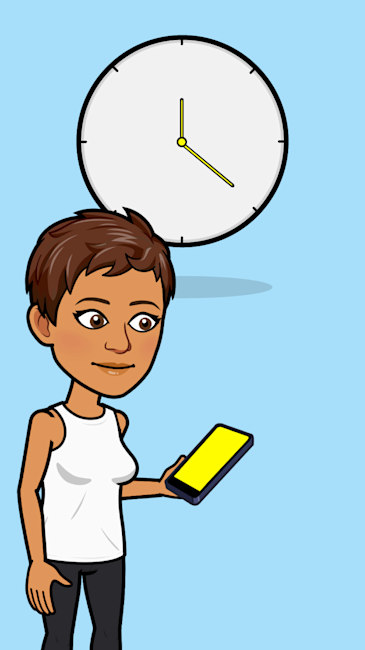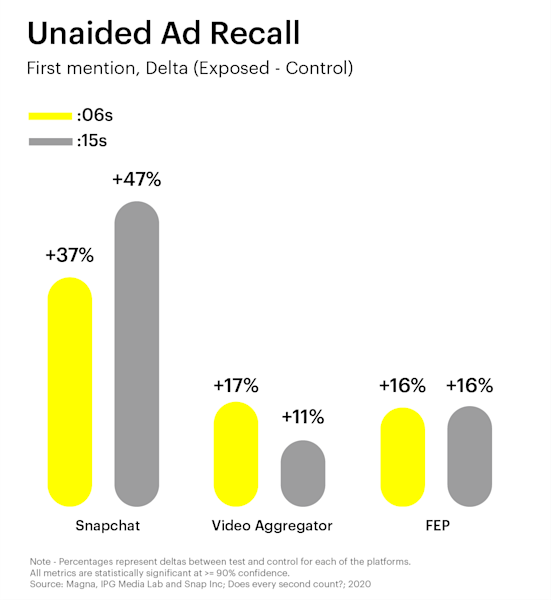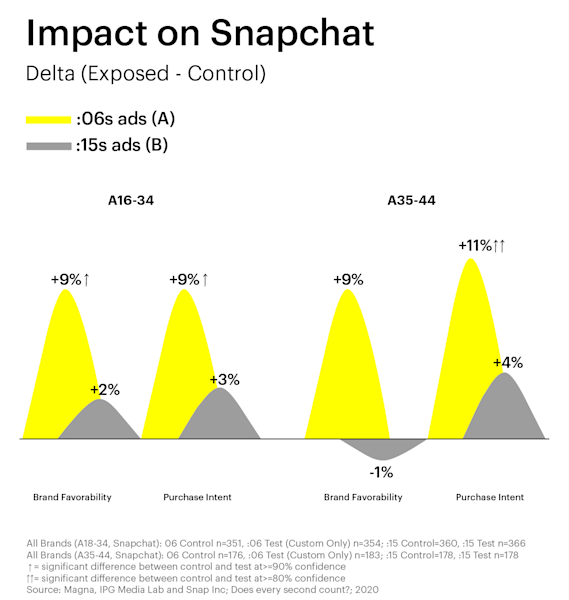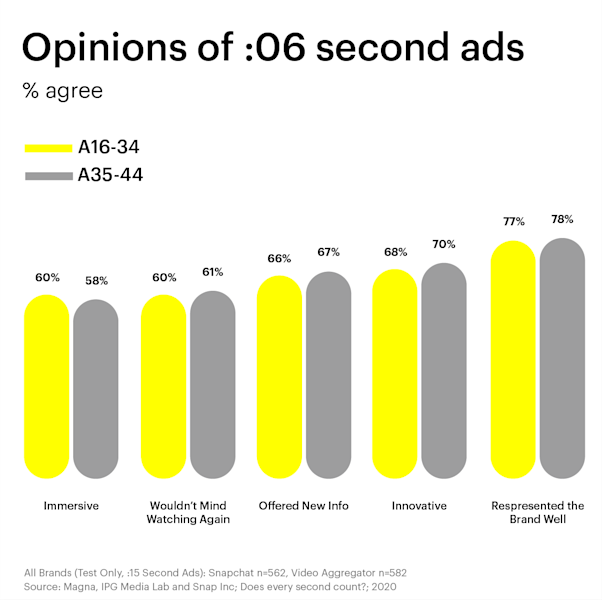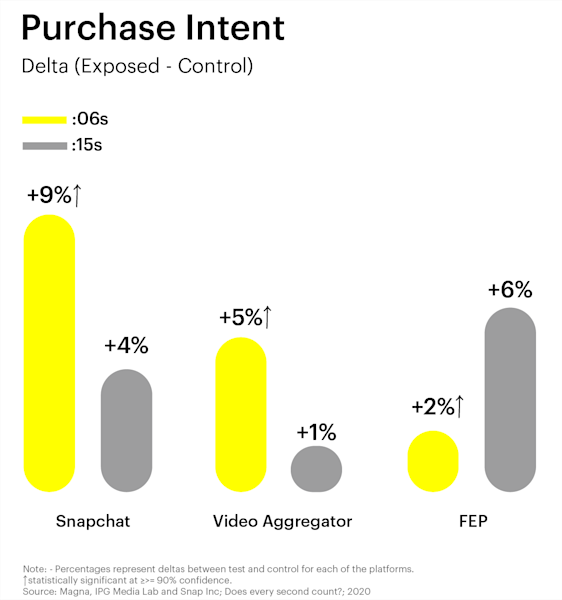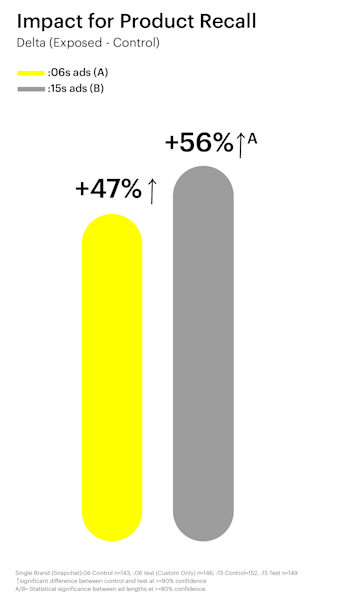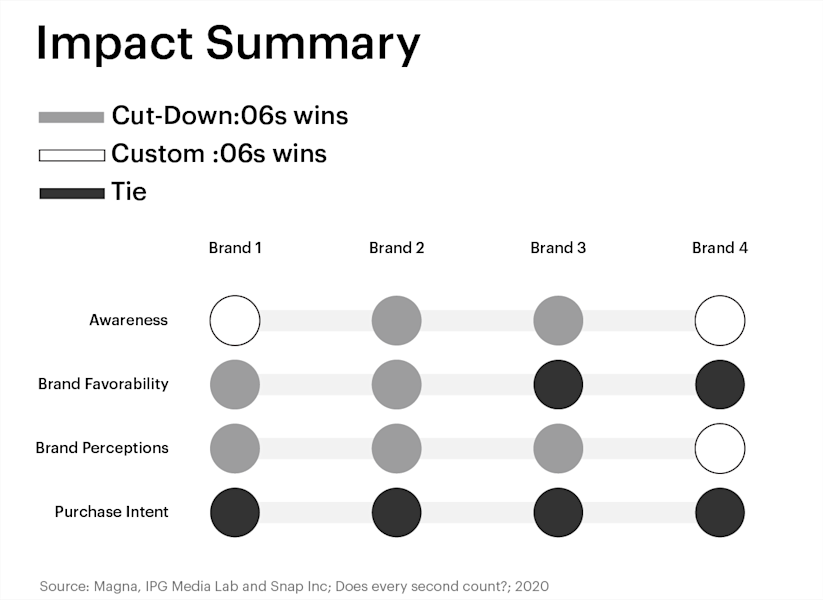A new study says they do, at least on video sites where longer ads are skippable
By Garett Sloane. Published by Ad Age on 10 December 2020.
IPG Media Lab and Magna helped Snapchat study the effectiveness of shorter ads.
When it comes to ad lengths, size doesn’t matter. In fact, six-second ads carry as much punch as 15-second ads, if not more, according to a new study that could benefit Snapchat.
The study, from IPG Media Lab and Magna, was released this week and tests the short-video format, which has proliferated online. Snapchat, YouTube, Facebook and Twitter all have some version of a 6-second spot, but the format has typically been considered an after-thought for creatives working on major campaigns.
Kara Manatt, SVP of intelligence and solutions at Magna, says that the six-second spot has finally come into its own though. The research showed that shorter ads persuaded more consumers to consider purchasing the products in the commercials than 15-second ads, particularly on Snapchat. The social media app cooperated with IPG Media Lab and Magna on the study.
“What we found was that shorter ads actually are much more effective than they used to be,” Manatt says. “We actually see a lot of persuasion happening.”
The study will be sure to meet some skepticism among advertising purists, with creatives at agencies still very much committed to longer ads with more cinematic qualities. TV networks have tried to adopt the six-second ad, too, but it’s still mostly found in social media and internet video sites.
Six-second ads have mostly been used as secondary components in campaigns, and are typically just shorter cuts of longer ads. But they perform better when they are conceived with the brevity baked into the concept, Manatt says.
Snapchat developed the six-second ad in 2018 as a way to offer an unskippable ad that was still short enough to pacify impatient viewers. For years, digital platforms have tried to prove that six seconds could offer a new kind of creative canvas for brands while also managing to satisfy the audience, which has been known to skip ads quickly when the option is there. “Consumers really like short ads right,” Manatt says.
Snapchat runs six-second commercials in its media section, which showcases high-production video programming from partners like BuzzFeed, Vice, Vox, CNN and others. Last quarter, Snapchat had its best performance yet selling ads with $679 million in revenue, an increase of 52 percent year over year.
“We’ve seen that shorter ad lengths, like our non-skip six-second Commercials, drive major outcomes,” said David Roter, Snap’s VP of global agency partnerships, in an e-mail statement about the study. “Snap internal data showed our immersive six-second ad format is effective at achieving both upper- and lower-funnel [objectives] for advertisers, and we wanted to test this hypothesis.”
The study compared six-second and 15-second ads on Snapchat. The 15-second ads are skippable on Snapchat. The study also looked at two other types of platforms, one was an unnamed “video aggregator” and the other was an unnamed “full-episode player.” A full-episode player is more like a TV network’s website, where viewers watch longer shows, and a video aggregator is closer to Snapchat’s style of video.
IPG Media Lab and Magna ran the study with four brands—Lego, Mini, Clinique and an unnamed consumer products brand. The result seemed to show that six-seconds performed better than 15-second ads on Snapchat in categories like “purchase intent” and “brand favorability.”
The results showed that nothing beats a 15-second ad that is unskippable on a full-episode player. In that setting, the longer ads were more effective. Still, the study emphasized that was only within the context of full-episode player video inventory. “With more traditional video, 15-second ads work best,” the study said.
